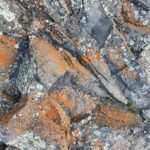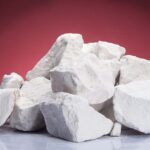Rocks and minerals, these seemingly mundane entities that make up the very foundation of our planet, have fascinated humanity for centuries. From the striking beauty of gemstones to the utilitarian value of construction materials, these natural wonders play a crucial role in shaping our world. But what is true about rocks and minerals? In this comprehensive exploration, we will delve into the intriguing world of geology and uncover the facts about these fundamental geological components. This article aims to provide a clear understanding of what rocks and minerals are, their properties, formation, and the significant role they play in our daily lives.

I. Minerals: The Building Blocks of Earth
-
Defining Minerals
Minerals are the bedrock of geology, and they serve as the fundamental building blocks of rocks. To understand rocks and minerals better, we need to begin by examining what defines a mineral.
A mineral is a naturally occurring substance with distinctive chemical and physical properties, composition, and atomic structure. These properties set minerals apart from other naturally occurring substances. The five essential characteristics of a mineral are:
a. Naturally Occurring: Minerals must form through natural geological processes, without human intervention. They are products of Earth’s dynamic processes, such as crystallization and cooling.
b. Inorganic: Minerals are not the result of organic processes, meaning they do not arise from living organisms. Instead, they are formed by the physical and chemical interactions of non-living elements and compounds.
c. Definite Chemical Composition: Each mineral has a specific chemical composition, with a consistent ratio of elements. This composition determines the mineral’s identity.
d. Ordered Atomic Structure: Minerals have a regular and ordered atomic structure, which is typically characterized by a crystalline lattice. This internal structure gives minerals their unique physical properties.
e. Solid: Minerals are naturally occurring solids with a fixed shape and volume, at least under normal conditions on Earth’s surface.
-
Classification of Minerals
Minerals come in a wide variety, and they can be classified into several major groups based on their chemical composition. The most common mineral groups are silicates, carbonates, oxides, sulfides, and native elements. Each group has distinct properties and characteristics:
a. Silicates: Silicate minerals are the most abundant group and are primarily composed of silicon and oxygen. They form the basic building blocks of Earth’s crust and include minerals like quartz, feldspar, and mica.
b. Carbonates: Carbonate minerals contain carbon, oxygen, and a metal, most commonly calcium. Limestone and calcite are well-known examples of carbonate minerals.
c. Oxides: Oxide minerals are composed of oxygen and a metal element. Hematite and magnetite are prominent examples of oxide minerals.
d. Sulfides: Sulfide minerals consist of sulfur and a metal. Pyrite, also known as “fool’s gold,” is a famous sulfide mineral.
e. Native Elements: Native element minerals are composed of a single element in its pure, uncombined form. Gold, silver, and copper are examples of native elements.
II. Rocks: The Geological Tapestry
-
What are Rocks?
While minerals serve as the basic building blocks of the Earth’s crust, rocks are composite geological entities that consist of two or more minerals mixed through geological processes. Rocks are like a tapestry woven from mineral threads, creating a diverse array of geological features and landscapes.
Rocks can be classified into three main types based on their formation processes:
a. Igneous Rocks: Formed from the cooling and solidification of molten magma or lava. This category includes rocks like granite and basalt.
b. Sedimentary Rocks: Created through the accumulation and compaction of sediments, such as sand, silt, and clay, or the precipitation of minerals from water. Common sedimentary rocks include sandstone, limestone, and shale.
c. Metamorphic Rocks: These rocks result from the transformation of existing rocks (either igneous, sedimentary, or other metamorphic rocks) due to high temperatures and pressure. Examples of metamorphic rocks are marble and schist.
-
The Rock Cycle
Understanding the relationship between rocks and minerals involves examining the rock cycle, a continuous process by which rocks undergo various changes and transformations. The rock cycle consists of three major stages:
a. Formation: Igneous rocks are formed through the cooling and solidification of molten magma or lava. Sedimentary rocks are created by the accumulation of sediments, often in layers, and the subsequent compaction and cementation of these materials. Metamorphic rocks form as existing rocks experience changes in temperature and pressure deep within the Earth’s crust.
b. Transformation: Over time, rocks can undergo transformations. Igneous rocks can weather and erode into sediment that becomes part of new sedimentary rocks. Sedimentary rocks can be buried and subjected to heat and pressure, leading to the formation of metamorphic rocks. Metamorphic rocks can melt and return to the molten state, restarting the cycle.
c. Destruction: The rock cycle is never-ending, and rocks can be destroyed through a combination of weathering, erosion, and transportation. The sediments produced during this process can be deposited to create new sedimentary rocks, continuing the cycle.
III. Properties and Utility of Rocks and Minerals
-
Physical Properties of Minerals
Minerals possess a range of physical properties, each of which can be used to identify and characterize them. Some of the key physical properties of minerals include:
a. Hardness: The resistance of a mineral to scratching. This property is often measured on the Mohs scale, with talc as the softest mineral (rating of 1) and diamond as the hardest (rating of 10).
b. Cleavage and Fracture: Cleavage refers to the way a mineral breaks along flat planes, while fracture refers to irregular breaks. Cleavage can help identify minerals, as some exhibit distinctive cleavage patterns.
c. Color: While color can be an initial clue, it is not always a reliable indicator of a mineral’s identity, as the same mineral can occur in various colors.
d. Luster: Luster describes how a mineral’s surface reflects light. Common luster types include metallic, non-metallic, and vitreous (glassy).
e. Specific Gravity: Specific gravity measures a mineral’s density compared to the density of water. It can provide information about a mineral’s composition.
f. Streak: The streak of a mineral is the color of the powdered form of the mineral. This can differ from the mineral’s external color and is useful for identification.
-
The Economic Importance of Minerals
The mining and extraction of minerals are essential for various industries and have significant economic implications. Here are some examples of the economic importance of minerals:
a. Construction and Building Materials: Minerals like limestone, granite, and sand are crucial for constructing buildings, roads, and infrastructure.
b. Energy Resources: Coal, a sedimentary rock, is a major source of energy through its use in electricity generation and industrial processes.
c. Precious and Semi-Precious Stones: Gemstones such as diamonds, emeralds, and rubies have high market value and are prized for their beauty and rarity.
d. Metals and Alloys: Minerals like iron ore, copper, and aluminum are essential for manufacturing a wide range of products, from automobiles to electronics.
e. Fertilizers: Phosphate and potassium minerals are used to produce fertilizers, which are crucial for modern agriculture and food production.
f. Chemicals and Pharmaceuticals: Minerals and their compounds are used in various chemical and pharmaceutical processes, including the production of medications and fertilizers.
-
Geological Survey and Exploration
Understanding the distribution and availability of minerals is critical for economic planning and resource management. Geological surveys and exploration play a vital role in identifying potential mineral resources and assessing their quality and quantity.
Geologists employ various techniques to locate and evaluate mineral deposits, including remote sensing, geophysical surveys, and geochemical analysis. These tools help in identifying promising areas for mining and mineral extraction, contributing to the economic development of regions.
IV. Rocks and Minerals in Our Daily Lives
-
Building Materials
Rocks and minerals are integral to the construction industry, serving as the foundation for our built environment. Here are some ways they are used in construction:
a. Aggregates: Crushed rocks and minerals are used to create concrete, which is the most widely used construction material in the world. Sand, gravel, and crushed stone are essential components of concrete.
b. Dimension Stone: Granite, marble, and other decorative stones are used for countertops, flooring, and ornamental features in buildings.
c. Bricks and Clay: Sedimentary rocks like shale and clay are the primary components of bricks and clay-based construction materials.
-
Technology and Electronics
Modern technology relies heavily on minerals and metals for the production of electronic devices and components. Some examples include:
a. Rare Earth Elements: Minerals containing rare earth elements like neodymium and cerium are used in the production of strong permanent magnets found in computers and electronic devices.
b. Silicon: Silicon, often derived from quartz, is a fundamental material used in the production of semiconductors, which power our computers and smartphones.
c. Copper: A widely used metal in electronics, copper is essential for conducting electricity, making it a crucial component in wires and connectors.
-
Energy Production
The energy sector heavily relies on both rocks and minerals for various forms of energy production:
a. Fossil Fuels: Coal, a sedimentary rock, is a primary source of energy through combustion in power plants. Oil and natural gas extraction also involves geological processes.
b. Uranium: Uranium ore, a mineral, is used as fuel in nuclear reactors to produce electricity.
c. Geothermal Energy: Geothermal power plants harness the Earth’s internal heat through drilling and tapping into hot rock reservoirs.
-
Agriculture and Food Production
The agricultural sector depends on minerals for the production of fertilizers, which are vital for crop growth and food production. Phosphates, derived from phosphate minerals, are a key component of fertilizers, providing essential nutrients to plants.
-
Health and Medicine
Minerals play a vital role in health and medicine. Some examples include:
a. Pharmaceuticals: Minerals are used in the production of medications and dietary supplements. Calcium, for instance, is a mineral commonly used in supplements to support bone health.
b. Dental Care: Fluorapatite, a mineral, is used in toothpaste to strengthen tooth enamel and prevent tooth decay.
V. The Environmental Impact of Mining
-
Sustainable Mining Practices
The extraction of rocks and minerals can have a significant impact on the environment, which has led to a growing emphasis on sustainable mining practices. Some key aspects of sustainable mining include:
a. Reclamation: After mining activities have concluded, companies are often required to rehabilitate the land, restoring it as closely as possible to its original state.
b. Reducing Environmental Footprints: Mining companies are increasingly implementing measures to minimize their environmental footprint, such as water management and waste reduction.
c. Responsible Sourcing: Consumers and industries are becoming more conscientious about sourcing minerals from regions or suppliers that adhere to ethical and environmental standards.
-
Environmental Challenges
Despite efforts to mitigate environmental harm, mining operations can still pose challenges, including:
a. Habitat Disruption: Mining can disrupt natural habitats, affecting local flora and fauna.
b. Water Pollution: The release of heavy metals and other contaminants from mining operations can lead to water pollution.
c. Soil Erosion: The removal of vegetation and soil during mining can contribute to soil erosion, which has long-term consequences.
VI. Geological Processes: The Formation of Rocks
-
Igneous Rock Formation
Igneous rocks are formed through the cooling and solidification of molten magma or lava. The type of igneous rock produced depends on the rate of cooling and the chemical composition of the magma or lava.
a. Intrusive Igneous Rocks: Form beneath the Earth’s surface as molten magma cools slowly. Granite is a common example of an intrusive igneous rock, characterized by its coarse-grained texture.
b. Extrusive Igneous Rocks: Form on the Earth’s surface as lava cools rapidly. Basalt is a well-known example of an extrusive igneous rock, typically having a fine-grained texture.
-
Sedimentary Rock Formation
Sedimentary rocks are created through the accumulation and compaction of sediments. This process can involve the following steps:
a. Weathering: Rocks are broken down into smaller fragments through physical and chemical weathering processes.
b. Erosion: Wind, water, or ice transport these fragmented particles to other locations.
c. Deposition: The transported particles settle in layers and accumulate over time.
d. Compaction and Cementation: Over time, the layers of sediment are compacted and cemented together by minerals, forming solid rock.
-
Metamorphic Rock Formation
Metamorphic rocks result from the alteration of existing rocks due to high temperatures and pressure deep within the Earth’s crust. The original rock, known as the protolith, undergoes a series of mineralogical and structural changes without melting. Key factors that drive metamorphism include heat, pressure, and chemically active fluids.
Metamorphic rocks can be categorized into two main types:
a. Foliated Metamorphic Rocks: Display a layered or banded appearance due to the alignment of mineral grains. Examples include schist and slate.
b. Non-Foliated Metamorphic Rocks: Lack a layered structure and often have a granular texture. Marble and quartzite are non-foliated metamorphic rocks.
VII. Geological Time Scales
Understanding the history of Earth and the formation of rocks and minerals requires the use of geological time scales. These scales divide Earth’s history into distinct eons, eras, periods, and epochs. The major divisions include:
- Precambrian Eon: This eon covers the majority of Earth’s history, from the formation of the planet to the beginning of the Phanerozoic Eon. It is further subdivided into the Hadean, Archean, and Proterozoic Eons.
- Phanerozoic Eon: The Phanerozoic Eon is the most recent eon, which began approximately 541 million years ago and continues to the present. It is characterized by the emergence and diversification of complex life forms. The Phanerozoic Eon is further divided into the Paleozoic, Mesozoic, and Cenozoic Eras.
- Geological Events: Throughout these time scales, various geological events shaped Earth’s surface, including the formation of mountain ranges, the shifting of continents, and periods of mass extinction.
VIII. Geological Wonders: Famous Rocks and Minerals
-
The Hope Diamond
The Hope Diamond, one of the world’s most famous gemstones, is a striking blue diamond known for its beauty and infamous curse. Mined in India, this diamond was once part of the French Crown Jewels and is now displayed at the Smithsonian Institution in Washington, D.C.
-
The Giant’s Causeway
The Giant’s Causeway, located in Northern Ireland, is a natural wonder composed of around 40,000 interlocking basalt columns, the result of ancient volcanic activity. These hexagonal columns have attracted visitors for centuries and are a UNESCO World Heritage Site.
-
The Grand Canyon
The Grand Canyon, a breathtaking geological formation in Arizona, USA, is a testament to the power of erosion. Over millions of years, the Colorado River has carved this immense canyon through sedimentary rock layers, revealing a cross-section of Earth’s history.
-
Mount Everest
Mount Everest, the world’s tallest mountain, stands as a geological marvel and a testament to the immense forces of tectonic plate movement. Located in the Himalayas, its formation is the result of the collision between the Indian and Eurasian plates.
IX. The Geological Time Capsule
Rocks and minerals serve as Earth’s time capsules, preserving invaluable information about our planet’s history and the evolution of life. By studying the rocks and minerals found in different geological layers, geologists can decipher the Earth’s past, track climate change, and even identify periods of mass extinction.
The field of paleontology also relies on rocks to find and study the remains of ancient life forms, further contributing to our understanding of the planet’s history.
Conclusion
Rocks and minerals are the hidden threads that weave the tapestry of our planet’s geological history. Minerals, with their unique properties, are the foundation of all rocks. Rocks, formed through geological processes, come in various types, each with its own origin story. Their properties and utility extend to nearly every aspect of our daily lives, from construction and technology to energy production and agriculture.
As we continue to explore Earth’s geological wonders, we must also recognize the impact of mining on the environment and the importance of sustainable practices. Rocks and minerals have shaped our world and continue to play a pivotal role in the development and progress of human civilization. By understanding their true nature, we gain a deeper appreciation for the geological marvels that surround us, and we learn to navigate our world more responsibly, ensuring that these precious resources are preserved for future generations.





